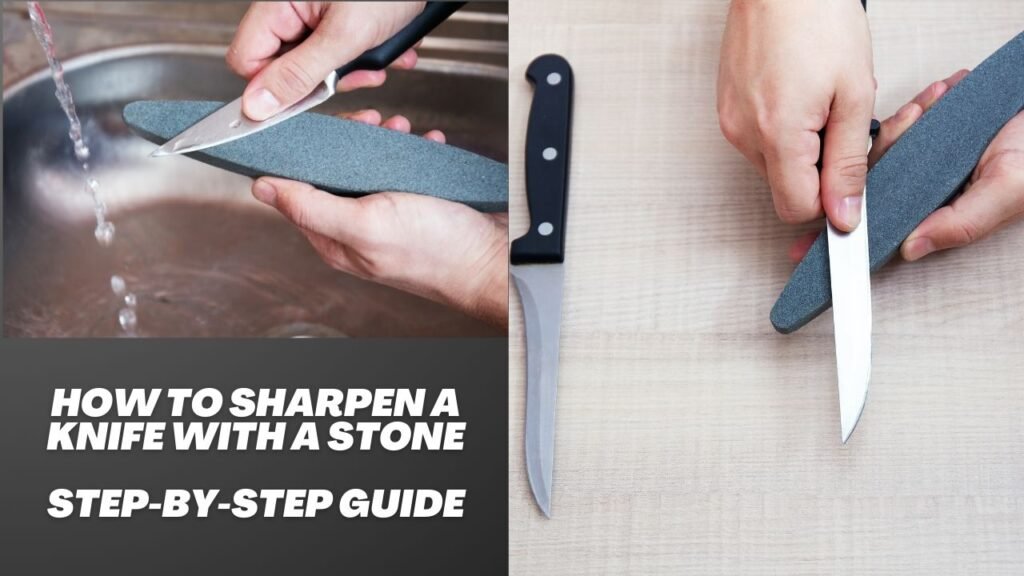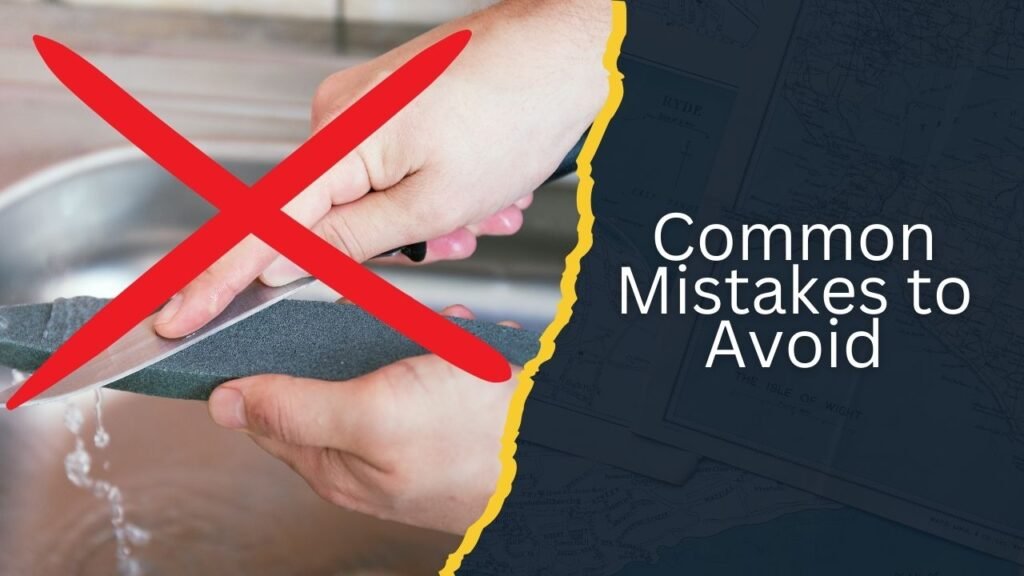Imagine effortlessly slicing through a ripe tomato or dicing vegetables with precision, all thanks to a razor-sharp knife. Whether you’re a home cook or a professional chef, knowing how to sharpen a knife with a stone is an invaluable skill that can elevate your culinary game. Not only does a well-sharpened knife make cooking easier and more enjoyable, but it also enhances safety by reducing the chances of slips and accidents. Let’s embark on a step-by-step journey to master the art of sharpening knives with a stone.
Why Sharpening Your Knife Matters
Before diving into the how, it’s essential to understand the why. A sharp knife isn’t just about ease of cutting; it’s about precision, efficiency, and safety.
- Efficiency: Sharp knives require less force, making your cutting tasks quicker and more effortless.
- Precision: A well-sharpened edge allows for more accurate cuts, enhancing the presentation of your dishes.
- Safety: Contrary to popular belief, sharp knives are safer than dull ones. They are less likely to slip off the food and cause accidental injuries.
- Longevity: Regular sharpening extends the lifespan of your knives, preserving their functionality and appearance.
Types of Sharpening Stones
Understanding the different types of sharpening stones is the first step in learning how to sharpen a knife with a stone effectively. Each type offers unique benefits tailored to various sharpening needs.
| Type of Stone | Description | Best For |
|---|---|---|
| Whetstones | Flat stones available in various grits, often used with water or oil. | Versatile sharpening for different blade types |
| Diamond Stones | Stones embedded with diamond particles, offering high durability and precision. | Fast sharpening and maintaining hard steels |
| Ceramic Stones | Hard, fine-grit stones ideal for honing and polishing edges. | Refining and polishing already sharp blades |
| Natural Stones | Stones sourced from nature, often prized for their unique sharpening properties. | Traditional sharpening with a unique touch |
Pro Tip: Choose a stone that matches your knife’s needs. For beginners, a medium-grit whetstone (around 1000 grit) is a great starting point.

Step-by-Step Guide: How to Sharpen a Knife with a Stone
1. Gather Your Tools
Before you start, ensure you have everything you need:
- Sharpening Stone: Choose based on your knife’s condition and your sharpening needs.
- Water or Oil: Depending on the stone type (whetstones usually use water, while oil stones require oil).
- Cloth or Towel: To clean the stone and your knife.
- Knife: The one you intend to sharpen.
2. Prepare the Stone
Proper preparation ensures effective sharpening:
- Soak the Stone: If using a whetstone, soak it in water for about 10-15 minutes until air bubbles stop appearing. Oil stones should be lightly coated with honing oil.
- Secure the Stone: Place the stone on a stable surface or use a non-slip base to prevent movement during sharpening.
3. Determine the Correct Angle
Maintaining the right angle is crucial for a consistent edge:
- Common Angles: Most kitchen knives are sharpened between 15° to 20°. Delicate knives may require a smaller angle, while tougher blades might need a larger one.
- Use a Guide: If you’re unsure, using an angle guide can help maintain consistency.
4. Start Sharpening
Follow these steps to sharpen your knife:
A. Begin with the Coarse Grit (if necessary)
- Purpose: Remove nicks and restore the edge.
- Technique:
- Hold the knife at the chosen angle against the stone.
- Starting from the base, sweep the blade across the stone in a smooth, controlled motion.
- Repeat 5-10 times on one side before switching to the other.
B. Move to the Fine Grit
- Purpose: Hone and polish the edge for a sharper finish.
- Technique:
- Repeat the same sweeping motion on the fine grit side.
- Maintain the same angle for consistency.
- Perform 5-10 strokes on each side.
5. Check the Sharpness
After sharpening, it’s essential to test the knife:
- Paper Test: Try slicing through a piece of paper. A sharp knife should cut cleanly without tearing.
- Visual Inspection: Look closely at the edge under good lighting. It should appear smooth and free of irregularities.
6. Clean and Store Your Tools
Proper maintenance prolongs the life of your sharpening stone and knife:
- Clean the Stone: Rinse it thoroughly to remove metal filings and drying it completely to prevent rust.
- Wipe the Knife: Remove any residue from the blade and store it in a safe place, preferably with a protective sheath or in a knife block.
Tips for Effective Knife Sharpening
Sharpening knives with a stone requires patience and practice. Here are some tips to enhance your sharpening experience:
- Consistent Angle: Keeping a consistent angle throughout the process ensures an even edge.
- Even Strokes: Apply equal pressure on both sides to maintain symmetry.
- Use the Entire Stone: Spread out your sharpening strokes to avoid uneven wear on the stone.
- Regular Maintenance: Regular honing between sharpenings can reduce the frequency of full sharpening sessions.

Common Mistakes to Avoid
Avoiding these pitfalls can make your sharpening efforts more effective:
- Incorrect Angle: Sharpening at the wrong angle can ruin the blade’s edge.
- Uneven Pressure: Applying too much or too little pressure can create inconsistencies.
- Skipping Steps: Neglecting the honing phase can result in a less sharp edge.
- Using the Wrong Stone: Using a coarse stone on a fine edge or vice versa can damage the blade.
Frequently Asked Questions
1. How Often Should I Sharpen My Knife with a Stone?
The frequency depends on usage. Heavy daily use might require sharpening every few months, while occasional use may only need it once a year. Regular honing can extend the time between sharpenings.
2. Can I Sharpen All Knives with the Same Stone?
Most kitchen knives can be sharpened with a standard whetstone. However, specialized knives like serrated blades may require specific tools or professional sharpening.
3. What is the Difference Between Honing and Sharpening?
Honing realigns the blade’s edge, maintaining its sharpness between sharpenings. Sharpening removes metal to create a new edge, which is necessary when the blade becomes dull or damaged.
4. Is It Better to Use Water or Oil with a Sharpening Stone?
It depends on the stone type. Whetstones typically use water, while oil stones require honing oil. Using the wrong lubricant can damage the stone and the knife.
5. Can I Sharpen a Knife Too Much?
Yes, excessive sharpening can wear down the blade, reducing its lifespan. It’s essential to sharpen only when necessary and follow proper techniques to avoid over-sharpening.
Personal Reflections: My Sharpening Journey
When I first started using a sharpening stone, it felt like navigating a foreign land. The consistent angles, the smooth motions—it all took practice. But once I got the hang of how to sharpen a knife with a stone, the rewards were undeniable. There’s something deeply satisfying about transforming a dull blade into a sharp, precise tool. It’s not just about the knife; it’s about honing a skill that blends patience, technique, and a bit of artistry.
Rhetorical Question: Have you ever experienced the joy of slicing through ingredients effortlessly with a perfectly sharpened knife? It’s a game-changer in the kitchen!
Advanced Sharpening Techniques
For those looking to take their sharpening skills to the next level, here are some advanced techniques:
1. Two-Piece Sharpening Stones
Using a combination of coarse and fine stones can enhance the sharpening process:
- Coarse Stone: Fixes nicks and sets the edge.
- Fine Stone: Polishes and hones the edge for a sharper finish.
2. Angle Variation
Experimenting with different angles can create edges tailored to specific tasks. For example, a smaller angle for delicate slicing and a larger angle for tougher chopping.
3. Maintaining Consistency
Invest in an angle guide or practice with visual markers to ensure you maintain a consistent angle throughout the sharpening process.
Table: Sharpening Stone Grit Guide
| Grit Level | Purpose | Recommended Use |
|---|---|---|
| 200-400 | Coarse sharpening | Repairing damaged edges or establishing a new edge |
| 800-1000 | Medium sharpening | General sharpening and maintaining edges |
| 3000-6000 | Fine honing and polishing | Refining the edge for a razor-sharp finish |
| 8000+ | Ultra-fine polishing | Creating a mirror-like, super-sharp edge |
Tip: Start with a lower grit for dull or damaged blades and progress to higher grits for polishing.
Enhancing Your Sharpening Experience
Sharpening knives with a stone can be a meditative and rewarding activity. Here are some ways to enhance the experience:
- Create a Dedicated Space: Set up a comfortable and organized sharpening station to streamline the process.
- Use Proper Lighting: Good lighting helps you see the blade’s edge clearly, ensuring a more precise sharpening.
- Stay Patient: Sharpening requires patience. Take your time to maintain quality over speed.
The Future of Knife Sharpening
As technology advances, so do sharpening tools and techniques. Innovations like automated sharpening systems and smart stones with built-in angle guides are making the process more accessible and precise. However, the traditional stone remains a favorite for many due to its simplicity and effectiveness.
Conclusion
Mastering how to sharpen a knife with a stone is a skill that combines technique, patience, and a bit of practice. By understanding the types of stones, following a structured sharpening process, and avoiding common mistakes, you can keep your knives in impeccable condition. Not only does this enhance your cooking experience, but it also ensures safety and prolongs the lifespan of your valuable kitchen tools.
Personal Opinion: There’s a certain satisfaction in holding a knife that’s been carefully sharpened by your own hands. It’s a blend of craftsmanship and functionality that every kitchen enthusiast should embrace.
Stay Sharp, Stay Safe!
Sharpening your knives with a stone is more than just maintenance; it’s an art form that enriches your culinary journey. Embrace the process, practice diligently, and enjoy the seamless cuts and enhanced flavors that come with a perfectly sharpened blade. Remember, a sharp knife is a happy and safe knife!
Additional Resources
- American Culinary Federation: Knife Skills and Safety – Link
- King Arthur Baking: Knife Sharpening Guide – Link
- The Spruce Eats: How to Sharpen a Knife with a Whetstone – Link
If you have any more questions or need further assistance on knife sharpening or any other topic, feel free to reach out!


